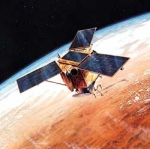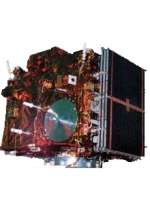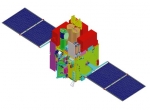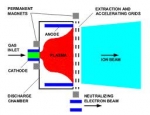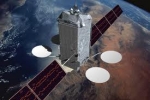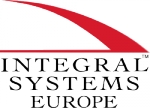Displaying items by tag: satellite
IKONOS
IKONOS is a commercial earth observation satellite, and was the first to collect publicly available high-resolution imagery at 1-meter and 4-meter resolution. It offers multispectral (MS) and panchromatic (PAN) imagery.
IKONOS imagery began being sold on January 1, 2000.
It derived its name from the Greek term eikōn for image.
It is operated by GeoEye.
IRS-P3
IRS-P3 is an Indian experimental Earth Observation mission, considered to be pre-operational and serving in parallel for technology evaluation and scientific methodology studies.
It was launched by PSLV-D3 on March 21, 1996 from SHAR Centre, Sriharikota, India. IRS-P3 carries two remote sensing payloads - Wide Field Sensor (WiFS) similar to that of IRS-1C, with an additional Short Wave Infrared Band (SWIR) and a Modular Opto-electronic Scanner (MOS). It also carries an X-ray astronomy payload and a C-band transponder for radar calibration.
Mission completed during January 2006 after serving 9 years and 10 months.
Astrosat
Astrosat is India's first dedicated astronomy satellite and is scheduled to launch on board the PSLV in 2012. After the success of the satellite-borne Indian X-ray Astronomy Experiment (IXAE), which was launched in 1996, the Indian Space Research Organization (ISRO) has approved further development for a full fledged astronomy satellite - Astrosat.
A large number of leading astronomy research institutions in India and abroad are jointly building various instruments for the satellite. Important areas requiring broad band coverage include studies of astrophysical objects ranging from the nearby solar system objects to distant stars, to objects at cosmological distances; timing studies of variables ranging from pulsations of the hot white dwarfs to active galactic nuclei (AGN) with time scales ranging from milliseconds to few hours to days.
Astrosat is currently proposed as a multi-wavelength astronomy mission on an IRS-class satellite into a near-Earth, equatorial orbit by the PSLV. The 5 instruments on-board cover the visible (320-530 nm), near UV(180-300 nm), far UV(130-180 nm), soft X-ray (0.3-8 keV and 2-10 keV) and hard X-ray (3-80 keV and 10-150 keV) regions of the electromagnetic spectrum.
Mission
Astrosat will be a proposal-driven general purpose observatory, with main scientific focus on:
- Simultaneous multi-wavelength monitoring of intensity variations in a broad range of cosmic sources
- Monitoring the X-ray sky for new transients
- Sky surveys in the hard X-ray and UV bands
- Broadband spectroscopic studies of X-ray binaries, AGN, SNRs, clusters of galaxies and stellar coronae
- Studies of periodic and non-periodic variability of X-ray sources
XIPS - Xenon Ion Propulsion System
XIPS is a com-mercial electron bom-bardment thruster (also known as an electrostatic ion thruster) – a form ion propulsion – that is a product of Hughes Space and Communications Company, which, in 2000, became part of Boeing Satellite Systems.
XIPS (pronounced "zips") employs the heavy inert gas xenon as a propellant. It was first used operationally aboard the PAS-5 (PanAmSat-5) communications satellite in 1997 and has since been fitted to many other geosynchronous satellites for use primarily in station-keeping. In a XIPS, xenon atoms are injected into an ionization chamber and ionized by electron bombardment. The propellant is then electrostatically accelerated through a series of biased grids. Ions, ejected by XIPS, travel in a stream at a speed of 30 km/s (62,900 mph), nearly 10 times that of a conventional chemical thruster. The high efficiency of the system leads to a reduction in propellant mass of up to 90% for a satellite designed for 12–15 years operation.
For example on a XIPS equipped Boeing 702 satellite, four 25-cm thrusters provide economical station keeping, needing only 5 kg of fuel per year. Boeing asserts that this is "a fraction of what bipropellant or arcjet systems consume". Boeing further asserts, that a XIPS can be used for final orbit insertion and has orders ( source: Wikipedia, Boeing_702 ) for spacecraft utilizing only ion thrusters. This conserves even more payload mass, as compared to using an on-board liquid apogee engine.
DA-Design
DA-Design Oy was founded in 1995, specialising in electronics and software engineering. Since then company has generated a wide competence in embedded systems related software, electronics, mechanic, RF and microwave engineering.
Space Business became a part of DA-Design in 2007 with the merging of DA-Design & Ylinen. DA-Design carries out projects as a subcontractor for major space companies and European Space Agency ESA. Typically these projects include system and equipment design, manufacturing and testing. DA-Design makes subsystems into satellites and performs technology development for the future satellites.
New facilities enable space quality equipment manufacturing for both electrical and mechanical parts. Assembly and testing is done in a purpose built clean room facility. Measurements are mainly carried out in DA-Design in-house facilities with a possibility to test in a nominal space environment, vacuum. The clean room area contains all needed measurement equipment and simulation of space vacuum and temperatures down to +4 ˚K.
Boeing 702 satellite
The Boeing 702 satellite is a family of geostationnary satellites designed and manufactured by the company Boeing.
Its design requirements include lower cost and high reliability. It offers a broad spectrum of modularity. A primary example is payload/bus integration. After the payload is tailored to customer specifications, the payload module mounts to the common bus module at only four locations and with only six electrical connectors. This design simplicity confers advantages. First, nonrecurring program costs are reduced, because the bus does not need to be changed for every payload, and payloads can be freely tailored without affecting the bus. Second, the design permits faster parallel bus and payload processing. This leads to the third advantage: a short production schedule.
Further efficiency derives from the 702's advanced xenon ion propulsion system (XIPS), which was pioneered by Boeing. XIPS is 10 times more efficient than conventional liquid fuel systems. Four 25-cm thrusters provide economical stationkeeping, needing only 5 kg of fuel per year - a fraction of what bipropellant or arcjet systems consume. Using XIPS for final orbit insertion conserves more mass as compared to using an on-board liquid apogee engine. Customers can apply the weight savings to increase the revenue-generating payload, to prolong service life, or to change to a less expensive launch vehicle (when cost is based on satellite mass).
EPOCH IPS
EPOCH IPS is a COTS software product (Commercially available Off-The-Shelf) intially developed by the company Integral System Inc., which is now Kratos ISI Inc. (after the merger with Kratos in 2011).
EPOCH is a product solution for satellite command and control. It is able to control an array of satellites with minimal personnel. A combination of EPOCH IPS’s open architecture, graphical user interface and automated monitoring and control features allows users to monitor and control both satellite and ground systems. EPOCH IPS’s architecture consists of several servers and user workstations all connected through an Ethernet local access network (LAN). EPOCH Integrated Product Suite contains EPOCH T&C Serverand EPOCH Client, which are Integral Systems' real-time satellite data processing and control software products. EPOCH Integrated Product Suite provides satellite command and control capabilities, including telemetry processing and display, commanding and command verification, ground-station control, alarm or event processing and data archiving. These functions are driven by the EPOCH Database product, allowing the system to support multiple satellites through database updates without modifying the run-time software.
EPOCH IPS
EPOCH IPS is a COTS software product (Commercially available Off-The-Shelf) intially developed by the company Integral System Inc., which is now Kratos ISI Inc. (after the merger with Kratos in 2011).
EPOCH is a product solution for satellite command and control. It is able to control an array of satellites with minimal personnel. A combination of EPOCH IPS’s open architecture, graphical user interface and automated monitoring and control features allows users to monitor and control both satellite and ground systems. EPOCH IPS’s architecture consists of several servers and user workstations all connected through an Ethernet local access network (LAN). EPOCH Integrated Product Suite contains EPOCH T&C Serverand EPOCH Client, which are Integral Systems' real-time satellite data processing and control software products. EPOCH Integrated Product Suite provides satellite command and control capabilities, including telemetry processing and display, commanding and command verification, ground-station control, alarm or event processing and data archiving. These functions are driven by the EPOCH Database product, allowing the system to support multiple satellites through database updates without modifying the run-time software.
Integral Systems Europe
Integral Systems Europe (ISE) is a subsidiary of the company American company Integral Systems Inc., specializing in satellite ground systems. ISE provides complete ground station integrated solutions including hardware, software and associated services. ISE manages sales in the European, Middle Eastern, Central Asian, and African geographical areas. ISE role is to provide COTS (Commercial-Off-the-Shelf) based solutions for:
- Satellite Control Systems,
- CSM (Carrier Systems Monitoring),
- M&C (Monitoring and Control),
- Military Networks.
Kratos ISI Inc.
Kratos Integral Systems International Inc. is a provider of products, systems and services for satellite command and control, telemetry and digital signal processing, data communications, enterprise network management and communications information assurance. Kratos ISI specializes in the development, management and operation of secure communications networks, both satellite and terrestrial, as well as systems and services to detect, characterize and geolocate sources of RF interference. Its customers include U.S. and foreign commercial, government, military and intelligence organizations.
Kratos Integral Systems International, Inc. has long-term relationships with the U.S. DOD, NASA, NOAA.
On July 27, 2011, Kratos Defense & Security Solutions Inc. merged with the company Integral Systems Inc. Now (2012), the company Kratos ISI is linked to the following network of companies :
- Integral Systems, Inc.,
- Integral Systems Europe,
- Lumistar, Inc.,
- Newpoint Technologies, Inc.,
- RT Logic SAT Corporation and CVG-Avtec.


